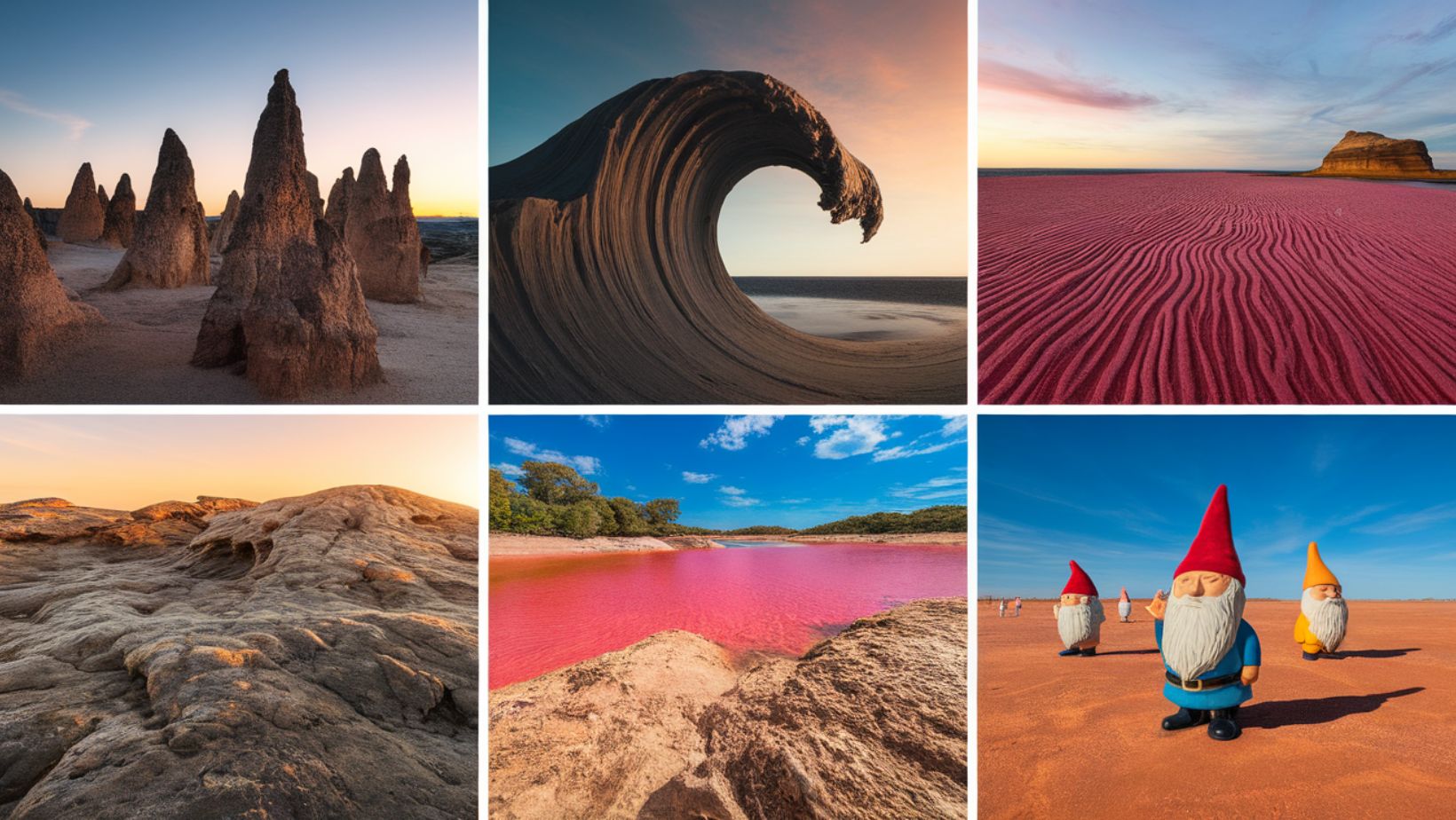Have you ever dreamed of walking on the surface of an alien planet? What if you could experience a landscape so surreal that it makes you question whether you’re still on Earth? Deep in Western Australia’s outback lies a mysterious desert where thousands of ancient limestone pillars rise from golden sands like sentinels frozen in time. Welcome to the Pinnacles Desert, where reality seems to blur with science fiction, and every sunset transforms the landscape into something straight out of a interplanetary expedition.
The Pinnacles Desert stands as natures most impressive limestone forest on Earth
Located within Nambung National Park, approximately 200 kilometers north of Perth, the Pinnacles Desert showcases over 20,000 limestone formations, some reaching heights of up to 3.5 meters. These geological marvels were formed roughly 25,000 to 30,000 years ago, when sea shells were broken down into limestone sand and eventually transformed into these remarkable structures through a complex process of weathering and erosion.
Dawn and dusk create an otherworldly spectacle that photographers cannot resist
Professional landscape photographer Sarah Mitchell shares, “The interplay of light and shadow during golden hour creates an almost supernatural atmosphere. The pillars cast long shadows across the desert floor, and the limestone takes on an ethereal glow that’s simply impossible to find anywhere else on the planet.” The best times for photography are during sunrise and sunset, when the desert’s colors shift dramatically, offering endless compositional possibilities.
The desert reveals its secrets through ancient Aboriginal dreamtime stories
Local Indigenous communities have long regarded this area as a place of spiritual significance. The Nyoongar people share stories of these formations being the petrified remains of ancestral beings, adding another layer of mystique to this already enigmatic landscape. These cultural narratives have been passed down through generations, offering unique insights into the area’s geological and spiritual significance.
Modern science uncovers the fascinating process behind these natural skyscrapers
Researchers have discovered that the formation process involved ancient rainforests, shifting sand dunes, and acidic groundwater. When plant roots helped break down the limestone, they created a unique environment where calcium carbonate could form these distinctive pillars. The process continues today, albeit at a much slower rate, making the Pinnacles a living laboratory of geological processes.
Visitors can explore this martian landscape through multiple accessible pathways
The desert features a 4-kilometer scenic drive and several walking trails that allow visitors to get up close to these ancient formations. The recently upgraded Desert Discovery Centre provides interactive exhibits explaining the area’s geology, wildlife, and cultural significance. With over 250,000 visitors annually, the park has implemented sustainable tourism practices to protect this unique ecosystem while maintaining its accessibility.
Wildlife thrives in this seemingly barren landscape throughout the year
Despite its harsh appearance, the Pinnacles Desert supports a diverse ecosystem. Western grey kangaroos, emus, and numerous reptile species call this area home. During spring (August to October), the surrounding desert bursts into color with wildflowers, creating a stunning contrast against the limestone pillars and golden sand. Visitors regularly spot birds of prey soaring between the peaks, adding to the dramatic atmosphere of this remarkable destination.
